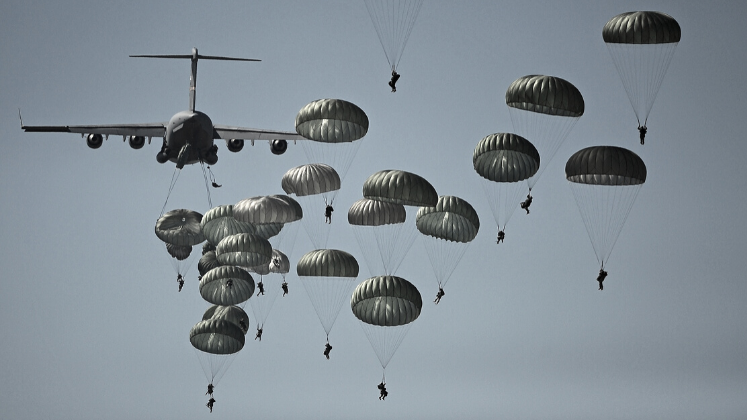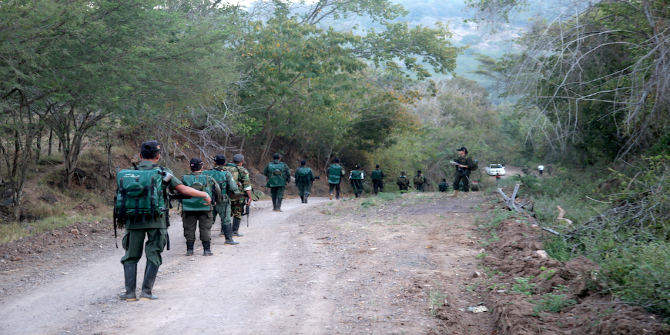Contrary to popular belief, quagmires in civil war are made, not found. This is the argument of Quagmire in Civil War, Jonah Schulhofer-Wohl‘s new account of the phenomenon of quagmire in civil wars that outlines how particular interactions and strategic choices can lead to this political trap. This is an essential theoretical study of international-domestic strategic interactions and their consequences for civil wars, writes Jacob Fortier.
Quagmire in Civil War. Jonah Schulhofer-Wohl. Cambridge University Press. 2020.
 When one thinks of foreign interventions in civil wars, one immediately considers the spectre of quagmire. To get bogged down in a civil war is indeed the outcome that foreign interveners seem to fear the most. It is also one of the main justifications for not intervening in a civil war: think of former US President Barack Obama warning Russia that it would get stuck in a quagmire in Syria, or European leaders’ reluctance to send troops into Rwanda in 1994 because ‘active involvement could lead them into a bloody quagmire’. But what exactly is a quagmire? How does it happen? Is there any escape from this political trap or is it the inevitable fate of all foreign interventions in civil wars? These questions have so far remained largely unanswered, even though they are crucial to understand the unfolding of civil conflicts and the impacts of foreign engagement.
When one thinks of foreign interventions in civil wars, one immediately considers the spectre of quagmire. To get bogged down in a civil war is indeed the outcome that foreign interveners seem to fear the most. It is also one of the main justifications for not intervening in a civil war: think of former US President Barack Obama warning Russia that it would get stuck in a quagmire in Syria, or European leaders’ reluctance to send troops into Rwanda in 1994 because ‘active involvement could lead them into a bloody quagmire’. But what exactly is a quagmire? How does it happen? Is there any escape from this political trap or is it the inevitable fate of all foreign interventions in civil wars? These questions have so far remained largely unanswered, even though they are crucial to understand the unfolding of civil conflicts and the impacts of foreign engagement.
Jonah Schulhofer-Wohl fills the conceptual vacuum around this phenomenon in Quagmire in Civil War. Quagmires, he claims, emerge from the strategic structure of the conflict. More precisely, a civil war will experience quagmire when at least one of the belligerents undergoes an entrapment situation in which the costs of fighting exceed the expected benefits, but withdrawing will increase rather than avert those net costs (4). The ‘mired’ belligerent therefore continues fighting past the point at which fighting can generate strategic gains and subsequently becomes unresponsive to its opponents’ war-fighting strategies. Consequently, the quagmire ends up spreading and affecting all warring factions, since each actor’s decision-making calculus is embedded in the decisions of others. One belligerent’s entrapment thus impacts on the fate of all actors involved in the conflict (5).
The causes of quagmire in civil war are multiple. Schulhofer-Wohl lists several characteristics of a conflict that might shape the balance between the costs of fighting and the additional costs of withdrawing. Domestic politics and asymmetry in a belligerent’s time horizon can generate quagmires, as can guerrilla strategies that seek to exhaust the political capital of a stronger opponent by ‘bogging down’ the conflict (Andrew Mack, 1975). The author wishes, however, to demonstrate that quagmire ‘is made, not found’. It is not intrinsic to a certain type of conflict, but rather related to the belligerent’s decisions that interact to produce the trap. Contrary to popular belief, one does not simply stumble into a quagmire; one generates it.

Image Credit: Image by skeeze from Pixabay
The book’s central theory thus identifies how external support affects the belligerent’s costs structure and decision-making, thereby making quagmire more likely to occur. The model presents two mechanisms to account for the risk of quagmire. The first illustrates how foreign assistance can expand the conditions under which belligerents are likely to carry on fighting, since external backing subsidises the costs of ongoing participation in the war. Foreign assistance thus pushes the belligerents to continue fighting despite rising costs and the declining stakes of conflict.
The second mechanism similarly predicts that belligerents facing increased costs are likely to move from territorial warfare to non-territorial warfare rather than withdraw from the conflict since foreign backers partially absorb the cost of their combat operations. By the end, belligerents find themselves mired in a situation in which either escalating the conflict in order to achieve victory or withdrawing from it are less attractive than pursuing foreign-backed, non-territorial and low-cost warfare. In other words, foreign assistance provides just enough to convince the belligerents to keep on fighting, but the belligerents do not strategically benefit from the continuation of hostilities, and neither, obviously, does the country at war – ‘quagmire compounds the tragedy’ (210).
In order to test the theory with an empirical case, the author dedicates the third and fourth chapters to an analysis of the Lebanese Civil War (1975 to 1990). He underlines how the belligerents’ strategic interactions with their respective foreign backers and opponents plagued any peace agreement for more than a decade. The analysis, supported by field interviews with former combatants, highlights some turning points in the war during which weakened factions chose to continue fighting due to foreign assistance and the possibility of de-escalation to non-territorial warfare. For instance, despite a clear trend of losing ground to their opponents, rightist factions decided in January 1976 to deepen their participation in the war by relying on external support and moving between types of warfare. The same phenomenon occurred on many occasions during the following decade, thus leading Lebanon down a path of long-lasting and inextricable conflict.
Always scrupulous in doing good social science, the author adds some external validity to the book’s theory in Chapter Five where he conducts a cross-country statistical analysis of 140 civil conflicts between 1944 and 2006. Having identified the civil wars that experienced quagmires as those that lasted longer than would be expected according to a comprehensive analysis of war duration, the author tests whether foreign interests, the cost of escalation in fighting and the stakes of conflict are associated with the presence of quagmires across civil wars. The results provide evidence that the two main mechanisms of the theory are positively correlated to the presence of quagmire.
Despite the originality of the research design, one can nevertheless raise some criticisms concerning the operationalisation of the dependent variable (the presence of quagmire). The operational definition expects quagmires to occur in wars whose actual length exceeds the duration predicted by the analysis. However, the duration model omits important variables, such as the technologies of rebellions (Stathis N. Kalyvas and Laia Balcells, 2010), United Nations arbitration (Karl De Rouen and David Sobek, 2004) and third-party interventions (Patrick M. Regan, 2002). These are all factors that are likely to affect conflict duration.
Moreover, the concept of foreign support is somehow ill-defined. Particular strategies for intervening might have different effects on the expected length of a conflict and the likelihood of quagmire. For instance, does providing shelter to rebels increase the risk of quagmire as much as providing them with arms and financial resources?
Another gap in the quantitative model concerns the power asymmetry between the state and the rebels, and the strategic equilibrium that results. For example, an aggressive and powerful government may force weaker rebels into hiding, paradoxically increasing the duration of the war since it raises the costs of escalation and forces the rebellion to move between types of warfare. In this case, the prolongation of hostilities is neither due to a quagmire situation nor to the duration factors identified in the model. Finally, a chapter on how quagmires end could have been interesting. Is the model able to explain how the strategic impasse is somehow resolved? Are the mechanisms accounting for quagmire also central in explaining conflict resolution?
Quagmire in Civil War is nevertheless of great academic relevance. It lays out the foundations for a completely new research agenda concerning the incidence of quagmire in civil wars and provides us with the first definition of quagmire. The richly evidenced sixth chapter condenses all of the arguments of the book into a very convincing comparative analysis, and the author compensates for the limitations of the quantitative analysis by taking into account more explanatory factors. Quagmire in Civil War is an essential theoretical work for the study of international-domestic strategic interactions and their consequences for civil wars.
Note: This review gives the views of the author, and not the position of the LSE Review of Books blog, or of the London School of Economics.







